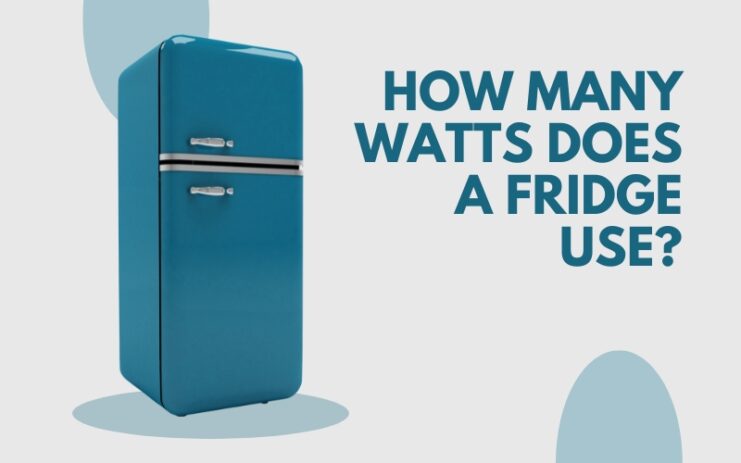As the human brain evolves, so do its luxurious needs. A refrigerator is one such item you can notice in every home now. Life seems quite challenging without it these days. Nevertheless, it comes with a hefty price.
Refrigerators consume fairly high power, which can increase your electricity bills. You can follow a few steps to calculate your fridge’s power usage and try to reduce the electricity consumption as far as possible. This guide discusses your cooling appliance’s power consumption and how to reduce it to its minimum.
Watts Consumed By An Average Refrigerator
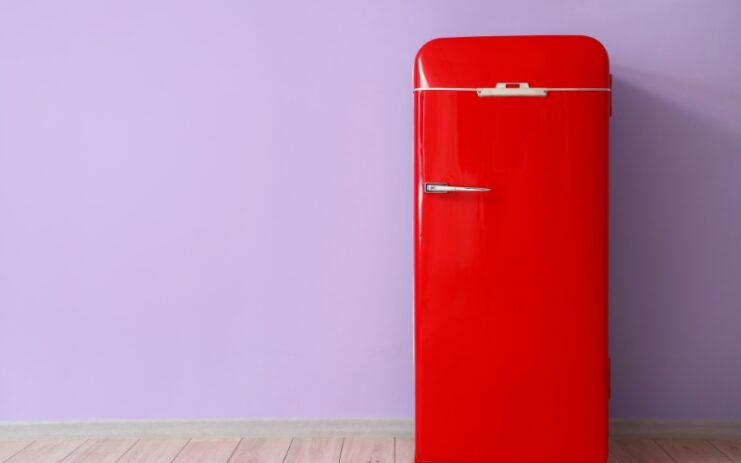
According to statistical reports of the US Energy Information Administration, a typical US household spends nearly $200 per year to fuel their refrigerators. However, this varies from one fridge to another, and one home to another as each refrigerator’s daily usage and average watts vary.
The electrical rating sticker on your fridge describes the number of watts it draws per hour when running at maximum capacity. On average, this electrical rating is roughly 500 watts. However, the reading can be somewhere between 200-800 watts.
But this is only the half picture. The compressor inside the refrigerator is not working all the time. It only operates when it needs to cool the temperature inside your refrigerator.
Hence, in the truest sense, refrigerators are switched on just when the compressor is operating, which means it operates only 1/3rd of the time it is turned on. This makes the calculation complex because you must divide the cooling appliance’s wattage reading by one-third.
One must remember that this is just an average reading. The size of the refrigerator and its age are some factors that affect your appliance’s wattage. Even the room temperature and the longer you keep your room door open play a role in changing this wattage reading.
Factors Influencing Electricity Consumption Of Your Fridge

A variety of factors influence the power usage of your fridge. Those factors are given below in no particular order.
Size
As the size of your cooling appliance increases, so does your electricity consumption. Therefore, the larger refrigerator you have, the more power it will consume.
Type
The type of your refrigerator also affects the power consumption as some are designed to work on high power and some on less. For instance, a commercial display refrigerator in showrooms consumes roughly ten times more electricity than a home refrigerator.
Usage
The number of times you switch the fridge door open and close compels the appliance to use more power, as the compressor should work harder to maintain the internal refrigerator temperature.
Additionally, you might consider stocking your fridge fully as a vacant fridge invites more hot air from the outside as the door opens, which then must be cooled down by the compressor. This increases power usage to a certain extent.
Location
Your cooling appliance uses more power in warmer, hotter, or poorly-ventilated areas than in cooler places as the compressor uses more power to keep the temperatures cool at warm places.
Age
A newly-bought five-star rated cooling appliance is undoubtedly more energy-efficient than the one bought six years ago.
Condition
Poor seal conditions result in the fridge compressor being less energy efficient, increasing electricity consumption.
Season
It’s evident that fridges will use high power during the summers than in winters as winters are much cooler and the power-using units need not work that hard.
How To Calculate A Refrigerator’s Electricity Consumption?
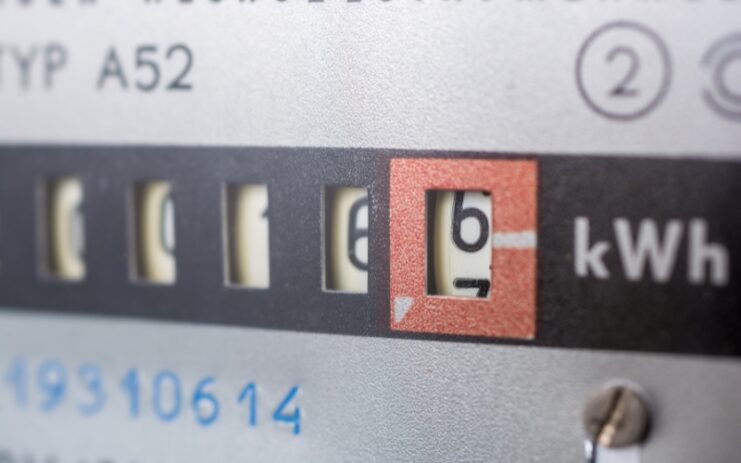
You can calculate the power consumption of your cooling device and wattage using the two methods below. Use the one which seems easier and simple to calculate to you with the help of the information present on your cooling appliance.
#1 – Volts And Amps Stickers
The simplest method to determine your refrigerator’s wattage and power expenditure are by looking at the sticker inside the refrigerator known as the volts and amps sticker. It shows the power used by your appliance when running.
Just multiply the volts by the amps; the result you get is the watts consumed when your device is running. This answer is termed as the fridge’s wattage. Sometimes, it is also known as the appliance’s electrical rating.
But the fridges operate in oscillating cycles, turning on and off as and when required the whole day. Therefore, you can obtain the average electricity consumption of your compressor or unit by dividing the wattage by three. To clarify, given below is an illustration that can be referred to as an example.
Suppose the sticker rating says 125 volts (V) and 4.2 amps (A). The calculation goes as follows:
125 volts (V) * 4.2 amps (A) = 525 watts (W)
Now, divide this answer by 3.
525 / 3 = 175 watts (W)
175 watts (W) is the average electricity consumption of your unit. Now, calculate the energy it consumes every day, every month, and per annum.
- Daily Power Expenditure:
175 watts (W) * 24 hours (hrs) = 4200 watts per hour (W/hr)
This can also be expressed as 4.2 kilowatts per hour.
- Monthly Power Consumption:
4.2 kilowatts * 30 days = 126 kilowatts per month (W/m)
- Annual Power Consumption:
4.2 kilowatts * 365 days = 1533 kilowatts per year (W/yr)
To simplify it in formulae:
- Volts (V) * Amps (A) = Wattage (W)
- Wattage (W) / 3 = Average Electricity Consumption (W)
- Average Electricity Usage (W) * 24 = Daily Power Usage (W)
- Daily Power Usage (kW) * 30 = Monthly Power Usage (kW)
- Daily Power Usage (kW) * 365 = Annual Power Usage (kW)
#2 – Energy Guide Sticker
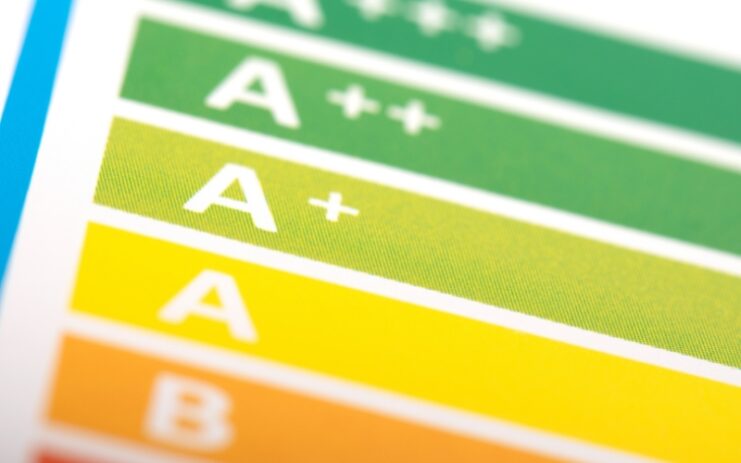
Every electrical appliance supplier attaches a yellow-colored power guide badge on their appliances which is mandatory for them to attach. This badge is very useful in determining the annual electricity usage and estimated operating costs per annum.
This method is relatively simpler than the first one, as you already have the yearly electricity expenditure value. You can calculate the absolute wattage of your cooling device by following the below steps.
First, divide the annual electrical energy consumption by the number of days per year, that is, by 365. This value is the daily electricity usage of your unit. Now divide this energy value by the number of hours per day, that is by 24. This gives the average hourly electrical expenditure, which is multiplied by three to get the wattage (W) of your cooling electrical device.
An illustration would help you understand it better. Assume that a refrigerator’s yearly electricity usage is 730 kilowatt-hours (kWh). To convert this unit into watts (W), you must multiply 730 by 1000.
730 kilowatt-hours (kWh) * 1000 = 730,000 watts (W)
Now divide the answer by 365 to get the daily power expenditure.
730,000 watts (W) / 365 = 2000 watts (W)
Divide 2000 watts (W) by 24 which will provide you with the average electricity consumption.
2000 watts (W) / 24 = 83.33 watts (W)
Now simply multiply the average power exhaustion by 3.
83.33 watts (W) * 3 = 250 watts (W)
Hence, the wattage of your cold-storage box is 250 watts (W).
To summarize the formulae:
- Yearly Power Expenditure (kWh) * 1000 = Yearly Power Expenditure (Wh)
- Yearly Power Expenditure (W) / 365 = Daily Power Exhaustion
- Daily Power Exhaustion / 24 = Average Electrical Energy Usage (W)
- Average Electrical Energy Usage * 3 = Wattage (W)
Tips To Decrease Your Icebox’s Energy Consumption?
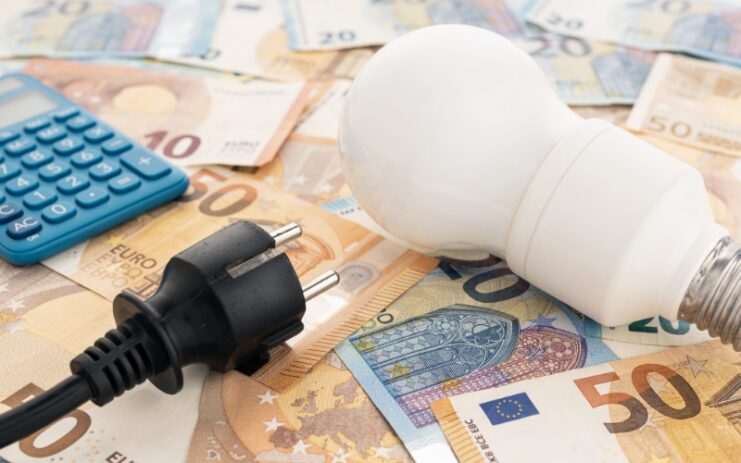
Although you cannot entirely eliminate the electrical energy expenditure required by your icebox, there are some ways to decrease energy exhaustion, which will lower the electricity bills. Read the following tips that can help you save dollars.
1. Keep An Eye On The Default Temperatures
A typical freezer has a very low default temperature. This can significantly increase electricity costs. You can utilize a basic thermometer to find the current temperature of your icebox and change it accordingly. A safe and recommended value for a household refrigerator would be 5˚C and -15˚C for the refrigerator and the freezer.
2. Place Your Refrigerator In A Breezy Setting
Most households place their refrigerators in congested places or jammed somewhere in their house. Poorly-ventilated cold-storage boxes require higher electrical energy to operate, increasing the electricity maintenance bills. Hence, ensure that your appliance gets enough ventilation to perform better and efficiently.
3. Always Wipe The Coils

Dirt-free coils allow the warm air to pass out more efficiently. Hence, your power unit must work little for the internal temperatures to stabilize. This increases your cooling unit’s overall energy efficiency, performance, and lifespan, which helps you decrease your electricity bills.
4. Turn Off Any Spare Fridges
If you own a spare cold storage that is not used so often but is filled with a few items, it is advised to empty it completely and turn the switch off.
5. Bring Timer Switches To Your Rescue
Timer switches are excellent for saving a good deal of money on your fridge’s energy expenditure. When you add timer switches, your fridge will only run when necessary if no perishable items are placed inside.
6. Ensure That You Don’t Have A Broken Door Seal
Hot air can easily slip through the seal of a broken door, and the cooler air will leave your cooling appliance. This forces the compressor or the power unit to work even harder to balance its optimal temperatures.
Along with escalating the power bills, it will also hamper the secure temperatures for your perishables and groceries. Therefore, ensure that your door seal is not faulty or broken and is perfectly tight.
The Bottom Line
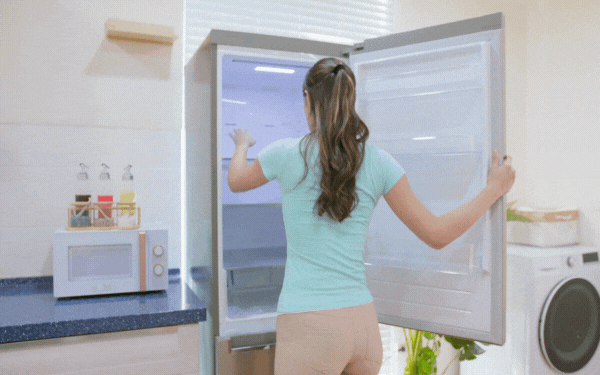
Estimating how many watts a fridge use is quite simple. The rating sticker or badge on your icebox is very handy when doing this job. Or you can also refer to method one to use the volts and amps stickers for this purpose.
Although one cannot eliminate the refrigerator’s power exhaustion bills, there are certainly some tricks to cut it down. Calculate your icebox’s electricity expenditure to evaluate the cost you spend on it. If you think you are spending more than you should on it, follow the above methods to reduce the costs.
Read also: Pros and Cons of Solar Power
FAQs
1. How much does a typical refrigerator’s monthly maintenance cost in the US?
A standard 250-300 watts fridge may cost around $18.00 per month in the US.
2. Which refrigerator utilizes the least electricity?
A top-mount freezer consumes the least power to function.
3. Does an old fridge require more power to operate?
Yes, a 5-10-year-old refrigerator uses more energy than newer models to function.

